M’sian Cooking For Dummies: 4-Ingredient Udang Sambal Petai To Cook At Home
You either love petai or hate it.
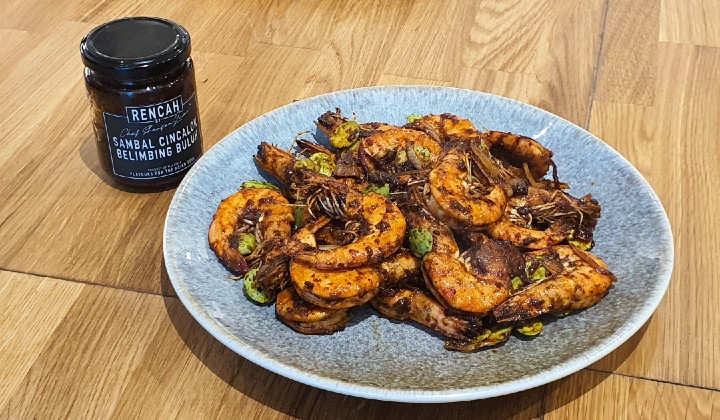
Subscribe to our Telegram channel for the latest stories and updates.
As a Malaysian, you either love udang sambal petai or hate it. The unassuming green beans has a delightful texture and mild taste, but carries a smell that clings to you like a desperate ex.
Still, the stomach wants what the stomach wants, and sometimes you just can’t beat the craving for udang sambal petai. What better time to cook it for yourself at home, now that you have the excuse of not seeing others (and burping petai-breath in their faces)?
Celebrity chef Sherson Lian tells us that while the dish may seem intimidating, it’s actually super easy and quick to whip up- you’d probably have the dish ready to eat before your rice finishes cooking.
4-Ingredient Udang Sambal Petai
Ingredients:
- Udang (prawns with the shell will lend the dish a shrimpier flavour, but for ease of eating, you can easily find deveined and peeled prawns as well)
- Petai (grocery stores now often carry pre-peeled petai so you won’t get the lingering smell of petai on your fingers either)
- Half a red onion (sliced)
- Pre-made sambal paste

(Credit: TRP)
Preperation:
1) Wash and clean the prawns. Then, pat dry. Toss in a hot pan until it is nearly, but not quite, cooked through. Then, take the prawns off the heat and set aside.
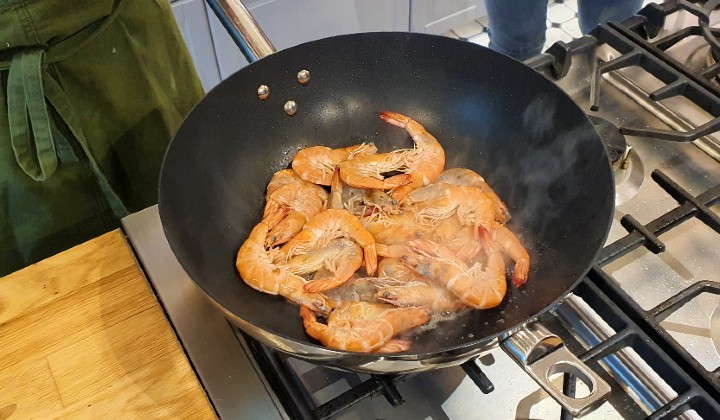
(Credit: TRP)
2) While the pan is still hot, add in a bit of oil. Then, add the petai. As it cooks, it will turn a shade of brighter green. Right before it cooks through, take it off the heat as well.
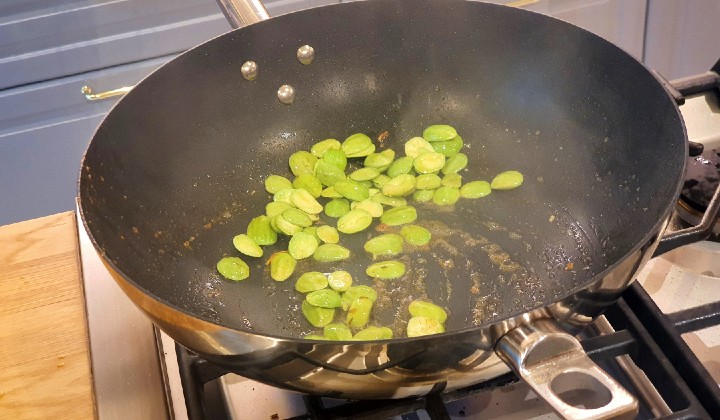
(Credit: TRP)
3) At this point, you’re almost done. You can put the almost-cooked petai together with your almost-cooked prawns for ease of washing up later. Here, we put them separately.
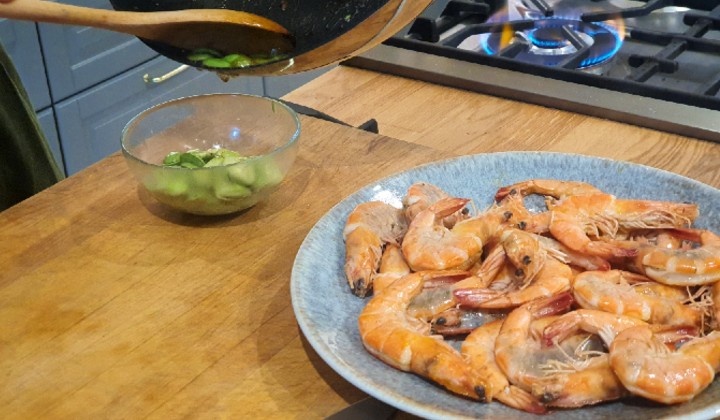
(Credit: TRP)
4) Add a bit more oil to the pan. Add the red onion slices.
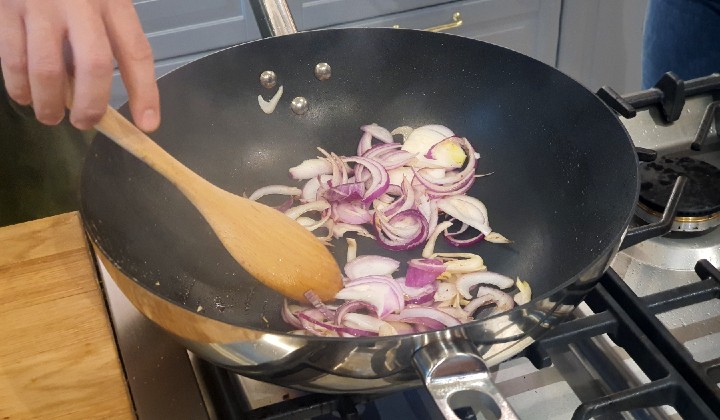
(Credit: TRP)
5) Drop a spoonful of sambal paste so that it cooks together with the onions. Frying the pastes brings out their flavour even more, so you should always try to do it when cooking. Stir for a minute or two until the onions start to brown.
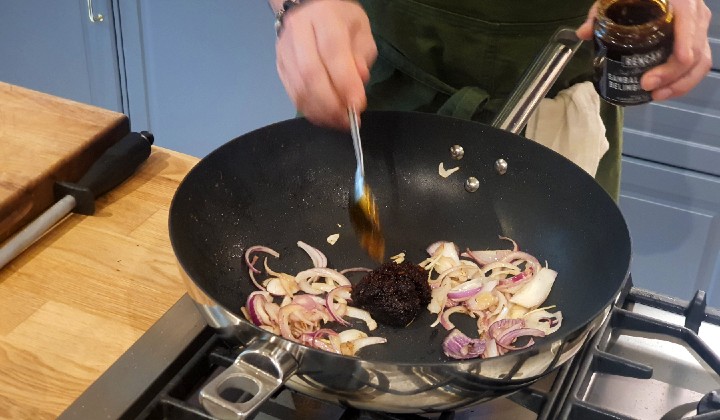
(Credit: TRP)
6) Add the prawns and the petai. Stir fry for another few minutes until everything is fully cooked through and well-coated with sambal.
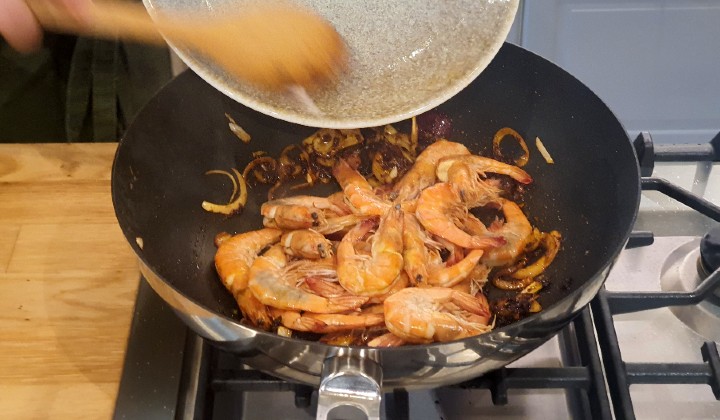
(Credit: TRP)
7) Put it on a nice plate and serve with rice.
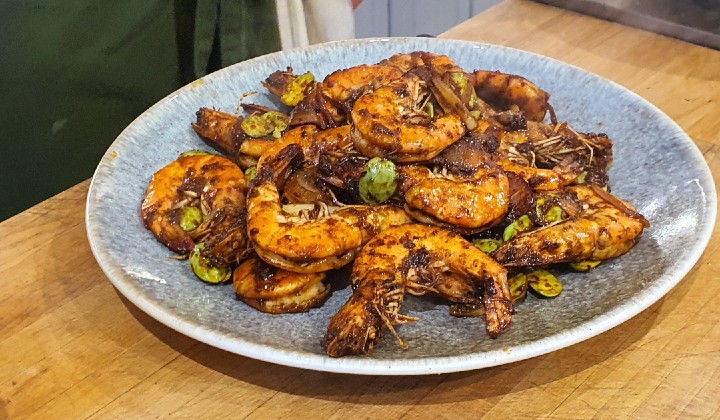
(Credit: TRP)
For this recipe, we used Sherson’s specialty Sambal Cincalok Belimbing Buluh paste from his line of Rencah pastes.
Cincalok isn’t a common ingredient used except in Malacca, where he grew up. You may know is as the pink fermented condiment with tiny shrimps, and can be a bit of an acquired taste.
For this paste, he mixed the cincalok with chunks of belimbing buluh (also known as bilimbi), a tart fruit with an acidic flavour, and sambal hitam.

The end result is an addictive savoury taste with hints of tartness that invigorates the appetite. Surprisingly, it had very little taste of fermentation, and is an amazing flavour-bomb all on its own. This sambal flavour is definitely something fresh, a welcome change to the usual sambal we eat.
PS. If petai isn’t your thing, try out the 3-ingredient ikan sambal belacan instead! Check out the recipe HERE.
Share your thoughts on Facebook, Twitter and Instagram!
Anne is an advocate of sustainable living and the circular economy, and has managed to mum-nag the team into using reusable containers to tapau food. She is also a proud parent of 4 cats and 1 rabbit.

